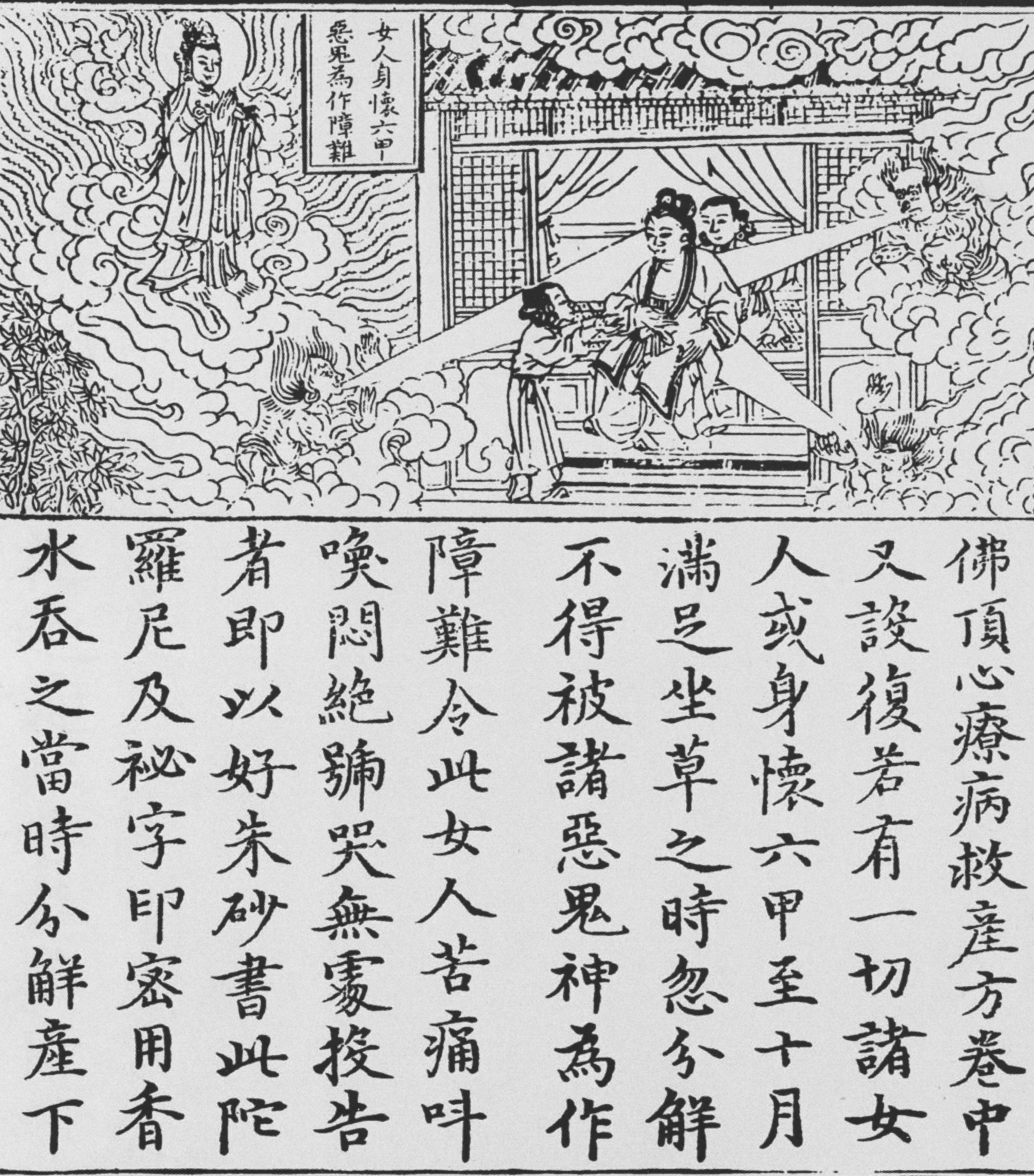Book Culture in Buddhism and Beyond lecture given by Prof. Shih-shan Susan Huang 黃士珊, Rice University
The 1450s represent a landmark decade for the history of the book and print culture. In Christian Europe, Johannes Gutenberg’s Bible, the first moveable-type book, is rightfully celebrated, but often mistakenly described as the beginning of printing worldwide. Mistakenly, because in Beijing, at the very same time, an indigenous Chinese Buddhist book, the Dharani Sutra of the Buddha’s Essence (Fodingxin tuoluoni jing佛頂心陀羅尼經), was becoming the most popular illustrated Buddhist book in print; and it was printed, often on-demand, using a woodblock printing technology that had been in use in East Asia already for centuries. The text represents a melding of cultural traditions and beliefs, integrating a long-standing devotion to the compassionate bodhisattva Guanyin 觀音 (Avalokiteśvara), elements of talismanic culture, and common popular beliefs. Women and their families hoping for a baby boy or fearing childbirth’s dangers formed a large and mainstream audience. This is evident in the donors’ prayers, the illustrations highlighting women’s anxiety related to pregnancy and childbirth, as well as talismanic Esoteric Script Seals (mizi yin 秘字印) at the end of the text that claimed to be “efficacious in rescuing [a woman] from difficulties in childbirth” (neng jiu chan’nan 能救產難).”
Shih-shan Susan Huang (Ph.D., History of Art, Yale) is an Associate Professor at Rice University’s newly-founded Department of Transnational Asian Studies. Her current research focuses on the 10th-to-14th-century Daoist and Buddhist visual culture in China. Prior to joining the Rice faculty, she taught at the University of Washington, Seattle, and was a Mellon Post- Doctoral Fellow at Columbia University. Her dissertation The Triptych of Taoist Deities of Heaven, Earth, and Water and the Making of Visual Culture in the Southern Song China (1127-1279) has been awarded the Blanshard Prize at Yale University. Her articles appeared in peer-reviewed journals as Artibus Asiae, Ars Orientalis, Journal of Daoist Studies, Palace Museum Research Quarterly, the Zhejiang University Journal of Art and Archaeology, and others.
Her book, Picturing the True Form: Daoist Visual Culture in Traditional China (Harvard Asian Center, 2012), translated into Chinese by Dr Zhu Yiwen, was published by Zhejiang University Press in 2022. She co-edited Visual and Material Cultures of the Middle Period China with Patricia Ebrey (Brill, 2017). Her recent articles explore Song-to-Ming book art of the Lotus Sutra and Diamond Sutra, Buddhist printing under Tangut Xi Xia rule, and painting and printing connections.
Huang's new monograph, The Dynamic Spread of Buddhist Print Culture: Mapping Buddhist Book Roads in China and its Neighbors, forthcoming in the Brill series Crossroads - History of Interaction across the Silk Routes, examines printed images and texts as objects “on the move”, as they were transmitted along networks and book roads in a transnational context.
For more information, visit https://shihshansusanhuang.com
明代(1450年代)最受歡迎的佛教圖經
1450年代是書籍史和印刷文化史上極具里程碑意義的時代。在基督教的歐洲,約翰內斯·古騰堡的《聖經》,即第一本活字印刷的書籍,受到了應有的關注,但常常被錯誤地描述為全世界印刷的開端。若反觀同時期的北京,一部在中國本土打造的《佛頂心陀羅尼經》,正在當地成為最受歡迎、圖文并茂的佛經刊本,並從此風行東亞。它通常在接受施主訂製後,以在東亞已流行了六七百年的雕版印刷術大量刊印。該文本雜糅了多種信仰與文化因子,融合了長期以來對觀音菩薩(Avalokiteśvara)的崇拜、符文化的元素、以及其他的民間信仰等。從施主的題記、突顯婦女對妊娠及分娩之焦慮的插圖、以及文本結尾宣稱“能救產難” 的“秘字印”等,可窺探當時此部佛經流傳的主要觀衆群,乃那些希望生下男嬰或擔心分娩風險的婦女及其家人。
黃士珊(耶魯大學藝術史博士)是美國萊斯大學新成立的亞洲跨國研究系的副教授。她目前的研究專注於中國十世紀至十四世紀道教與佛教的視覺文化。在加入萊斯大學之前,她曾任教於華盛頓大學西雅圖分校,並擔任哥倫比亞大學梅隆基金會博士後研究員。她的博士論文《道教天地水三官圖套畫和南宋視覺文化的形塑》曾獲耶魯大學藝術史博士論文獎 (Blanshard Prize)。她的論文發表於《亞洲藝術》(Artibus Asiae)、《東方藝術》(Ars Orientalis)、《故宮學術季刊》、《浙江大學藝術與考古研究》等學術期刊。
黃教授第一本專著的中譯本《圖寫真形:傳統中國的道教視覺文化》(Picturing the True Form: Daoist Visual Culture in Traditional China, 哈佛大學亞洲研究中心, 2012) 經祝逸雯博士翻譯,由浙江大學出版社於2022年出版。此外,她與伊佩霞教授 (Patricia Ebrey) 合編《中國中古時期的視覺文化與物質文化》(博睿, 2017)。她近期的文章探討了宋明時期《法華經》與《金剛經》的書籍藝術、西夏王朝的佛教印刷物、以及繪畫與印刷的交匯。
黃教授的新著《佛教印刷文化的傳播:中國及其周邊的佛教書籍之路》 即將由博睿 (Brill) 出版 (博睿系列叢書《交叉路口:絲綢之路交流史》)。基於印刷物通過關係網絡與書籍之路在跨國語境中得以傳播,此新著將印刷的圖像與文本作為“流動的”物品進行探討。有關黃士珊更多的學術訊息,請參考https://shihshansusanhuang.com
| Contact |
|---|
| Dr Noga Ganany: ng462@cam.ac.uk |

